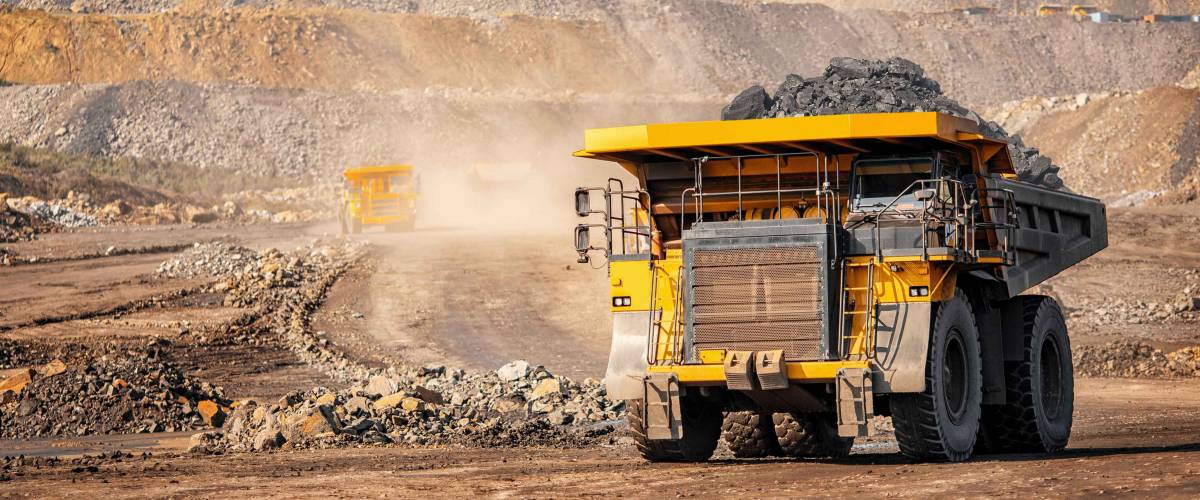What is commodities investing?

Commodities are the raw materials at the foundation of everyday life: Things that can be mined, drilled or grown and then used to produce the goods we rely on.
Whether we’re sipping coffee, putting on a new T-shirt or pumping gas into our cars, commodities make it all possible. Which means people’s day-to-day consumption habits, and less controllable factors like weather, have a significant impact on commodity prices.
From an investor’s perspective, commodities trading is simply the act of buying and selling these raw materials to either earn a profit or hedge risk.
There are four main types of commodities:
- Agricultural products: Soft commodities that are grown and include products such as cocoa, coffee, cotton, sugar, corn, wheat and fruit.
- Livestock and meat: Soft commodities that are ranched and include products such as live cattle, chickens, pork bellies and milk.
- Energy products: Hard commodities that are drilled or mined and include things like oil, coal, natural gas, ethanol and electricity.
- Metals: Hard commodities that are mined and include both precious metals (like gold and silver) and base metals (like copper, aluminum and zinc).
A better online investing experience
Easy to use and powerful, Qtrade's online trading platform puts you in full control with tools and resources that help you make well-informed decisions.
Invest NowWhy invest in commodities?

While investors are always hunting for bigger returns, there are other good reasons to invest in commodities:
Reason #1: Diversification
Diversification is probably the single best reason to add commodities to your portfolio.
Why? Because commodities tend to have very little correlation with more traditional asset classes.
Historical trading patterns have shown stocks and bonds tend to move in tandem with each other. That can make it difficult to guard against a downturn if those are the only groups you’re invested in.
But it’s different with commodities.
Commodities are primarily influenced by the supply and demand dynamics occurring in their individual markets. Changing demand for oil, copper or cotton will often have a greater impact on their prices than an overall market direction.
That means commodities don’t necessarily move in lockstep with other financial assets; and in many cases, they can move in the opposite direction of stocks and bonds.
So, allocating a portion of your portfolio to commodities can give you a cushion against a decline on Wall Street.
Reason #2: Inflation hedge
Investing in commodities remains one of the most reliable ways to guard against the ravages of inflation. That’s because as inflation rises, the price of raw materials increases right along with it.
Legendary investor Warren Buffett recently touched on this phenomenon when discussing his company’s current housing operations.
“The costs are just up, up, up,” he said at Berkshire Hathaway’s annual shareholders’ meeting. “Steel costs, you know, just every day they’re going up.”
Commodities have historically performed well during periods of high inflation, even as stocks and bonds declined.
How to invest in commodities

There are several ways to invest in commodities, including just buying and owning them directly.
If you want to invest in gold, for example, purchasing a few gold coins from a local dealer is easy enough.
The difficulty lies in owning unwieldy commodities like oil or livestock. Very few people have the space to store hundreds of barrels of oil or to house a herd of cattle.
Thankfully, there are three practical methods for average investors to own commodities.
Commodity ETFs
Commodity exchange-traded funds (ETFs) offer the simplest way to gain exposure without having to directly own the commodity.
Some commodity ETFs let you zero in on a single commodity, while others group them together for broad-based exposure.
For instance, the iShares Gold Bullion ETF (CAD-Hedged) is designed to closely track gold prices, giving you a simple way to invest in the yellow metal.
Meanwhile, Invesco’s previously mentioned Commodity Index Tracking Fund provides exposure to 14 of the most heavily traded physical commodities, including crude oil, gasoline, corn, gold and soybeans.
ETFs typically have very low management fees, and you save even more by buying them through a zero-commission investing app.
Commodity stocks
Another easy way to invest in commodities is by owning the companies that produce them.
For instance, Canadian energy blue chips like Suncor, Enbridge and Imperial Oil are a good way to gain exposure to oil and natural gas. And, stocks like First Quantum Minerals, Russel Metals, West Fraser and Nutrien let you invest in minerals, metals, timber and fertalizer — all longtime backbones of Canada's resource-driven economy.
A word of caution: Commodity stocks don’t always track their underlying commodities perfectly because other business-specific factors come into play — like the company’s financials, the quality of its management team and long-term production prospects.
At any given time, any one of those factors can have a greater impact on the stock price than the underlying commodity.
You can easily invest in commodity stocks through any number of investing apps — though some will give you free cash for getting started.
Commodity futures
Finally, investors can use futures contracts to bet on how a particular commodity’s price will move. Futures involve agreeing to buy or sell a given commodity at a predetermined future price and time.
Buyers of futures contracts profit when commodity prices rise. Sellers of futures contracts profit when commodity prices fall.
While futures were designed for major commodity producers to hedge against price volatility, individual investors can get into the game if they have a brokerage account that offers it.
Novice investors should exercise extreme caution with futures contracts due to the high degree of borrowing typically involved.
Unexpected vet bills don’t have to break the bank
Life with pets is unpredictable, but there are ways to prepare for the unexpected.
Fetch Insurance offers coverage for treatment of accidents, illnesses, prescriptions drugs, emergency care and more.
Plus, their optional wellness plan covers things like routine vet trips, grooming and training costs, if you want to give your pet the all-star treatment while you protect your bank account.
Get A QuoteMaking the call

With inflation continuing to heat up, it doesn’t look as if the rally in commodities will slow anytime soon. Hopping on for the ride, even at these elevated levels, is tempting.
But be sure to remember this: Commodities investing is always a high-risk, high-reward proposition. Newer investors might prefer a low-stakes alternative, like an app that lets you invest with just your "spare change."
In order to minimize that risk, consider leaning on dividend-paying commodity producers and established commodity ETFs for the vast majority of your exposure.
Sponsored
Trade Smarter, Today
Build your own investment portfolio with the CIBC Investor's Edge online and mobile trading platform and enjoy low commissions. Get up to $100 in commission-free options until October 31, 2024.








